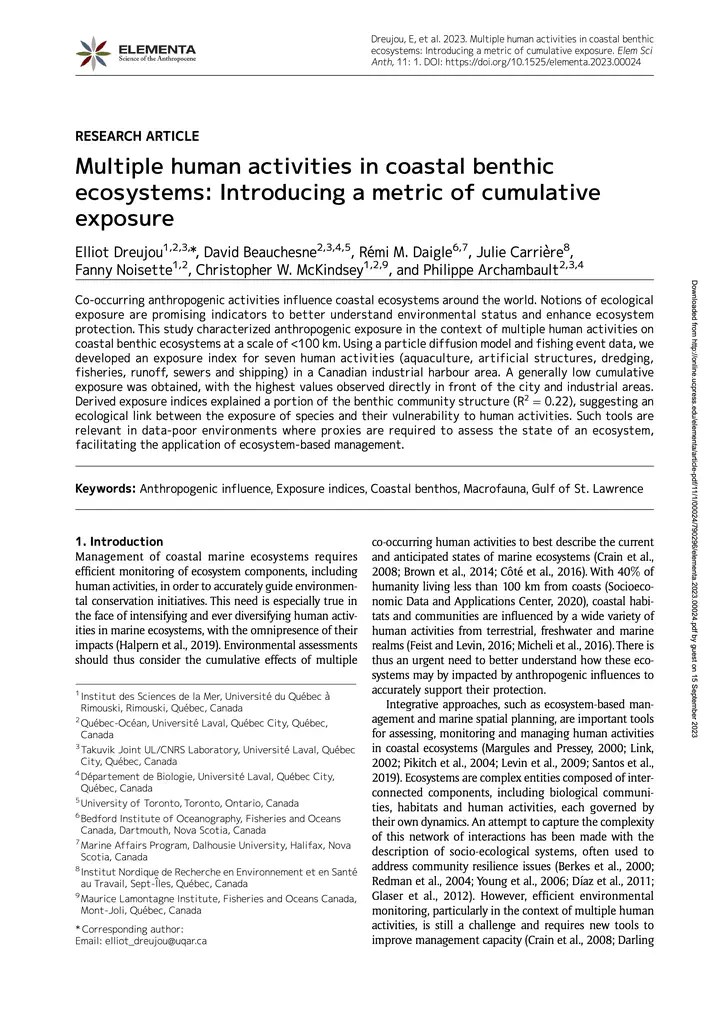Multiple human activities in coastal benthic ecosystems: Introducing a metric of cumulative exposure

Abstract
Co-occurring anthropogenic activities influence coastal ecosystems around the world. Notions of ecological exposure are promising indicators to better understand environmental status and enhance ecosystem protection. This study characterized anthropogenic exposure in the context of multiple human activities on coastal benthic ecosystems at a scale of <100 km. Using a particle diffusion model and fishing event data, we developed an exposure index for seven human activities (aquaculture, artificial structures, dredging, fisheries, runoff, sewers and shipping) in a Canadian industrial harbour area. A generally low cumulative exposure was obtained, with the highest values observed directly in front of the city and industrial areas. Derived exposure indices explained a portion of the benthic community structure (R2 = 0.22), suggesting an ecological link between the exposure of species and their vulnerability to human activities. Such tools are relevant in data-poor environments where proxies are required to assess the state of an ecosystem, facilitating the application of ecosystem-based management.